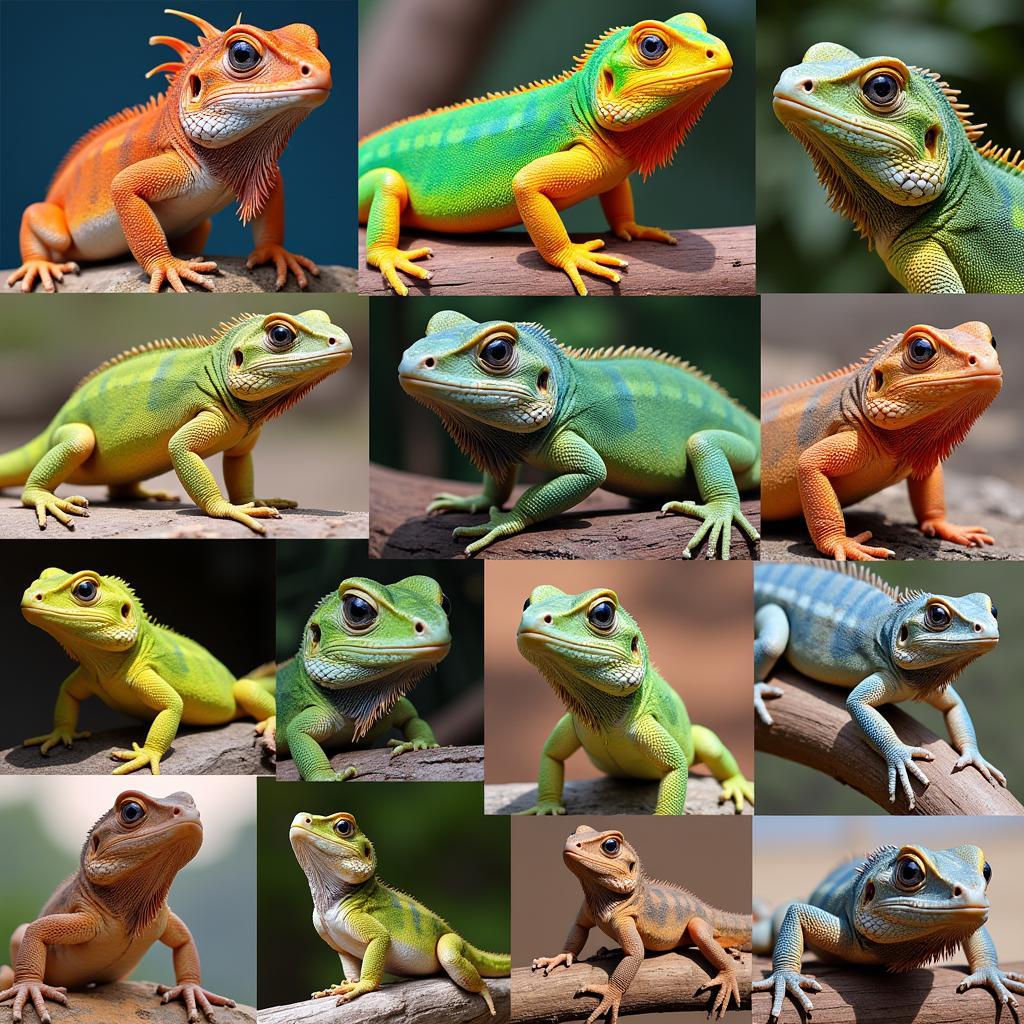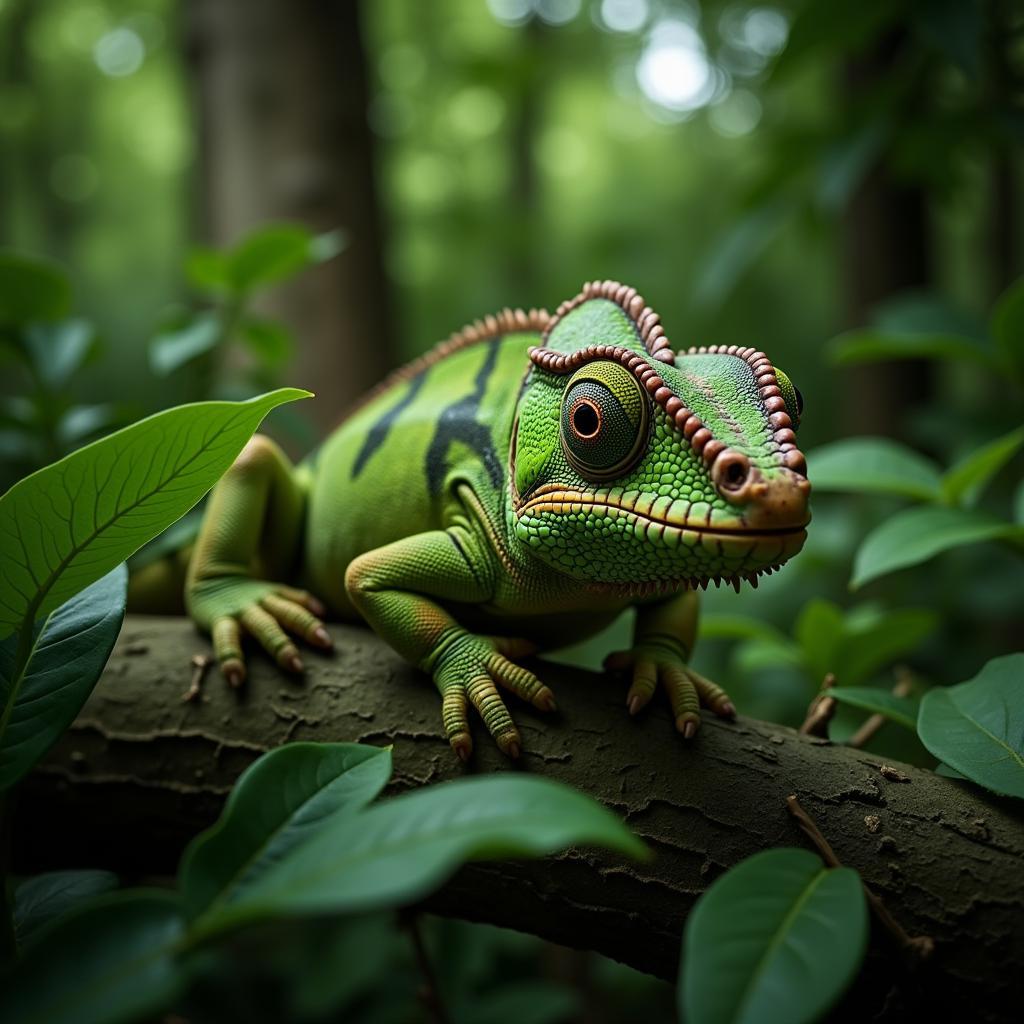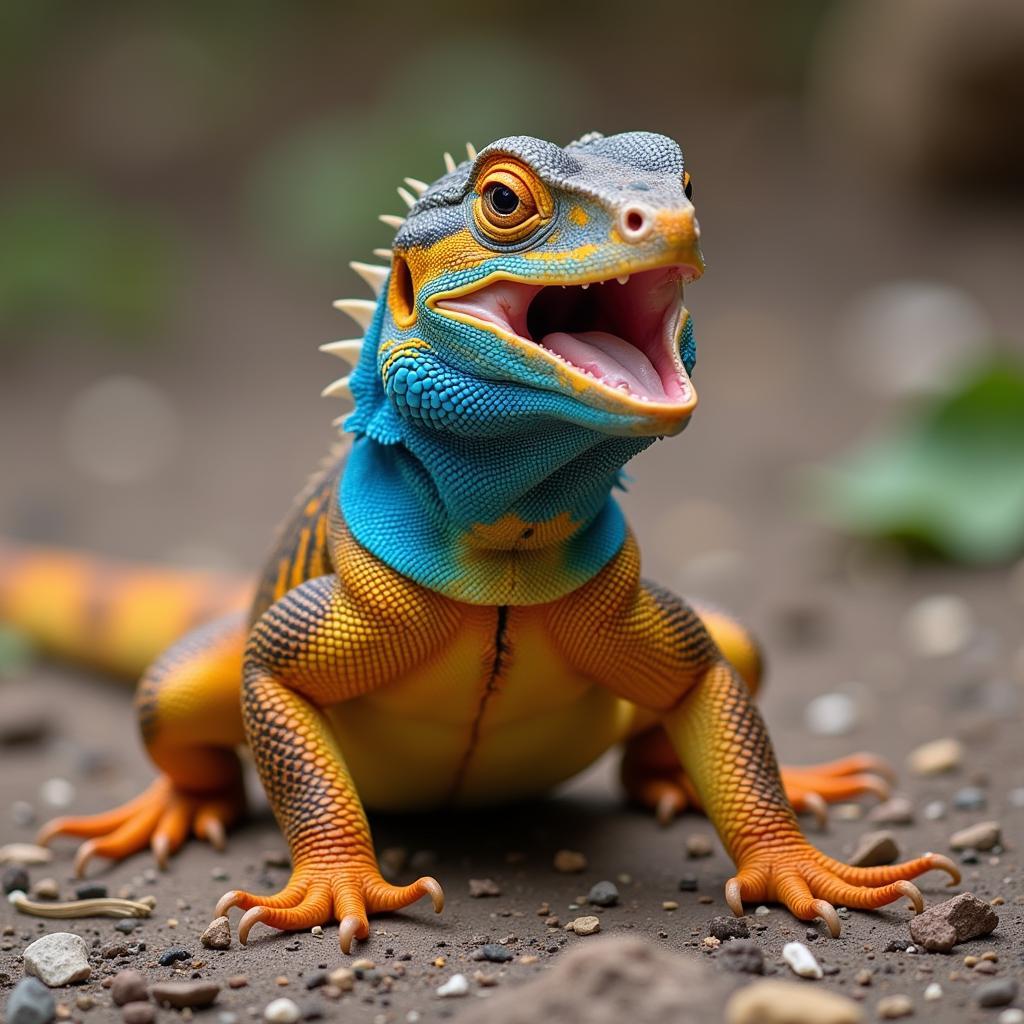A Guide to African Lizards: Diversity, Habitats, and Conservation
Africa, a land teeming with biodiversity, is home to a fascinating array of reptiles, and among them, lizards hold a special place. From the arid deserts of the Sahara to the lush rainforests of the Congo Basin, African Lizards showcase an incredible diversity in size, shape, color, and behavior. This article delves into the captivating world of these creatures, exploring their unique adaptations, ecological significance, and the challenges they face.
 Diverse African Lizard Species
Diverse African Lizard Species
The Incredible Diversity of African Lizards
The African continent boasts an impressive variety of lizard species, each uniquely adapted to its environment. Among the most iconic are the chameleons, renowned for their independently moving eyes, prehensile tails, and ability to change color. These masters of camouflage are found in various habitats, from rainforests to savannas, where they patiently stalk insects with their lightning-fast tongues.
 Chameleon Camouflage in African Forest
Chameleon Camouflage in African Forest
Then there are the agamas, a diverse group known for their often vibrant colors and striking displays. The male Agama lizard, for example, sports brilliant blue and orange markings, used to attract mates and defend their territory. They are frequently spotted basking on rocks, their vibrant colors a stark contrast to the arid landscapes they inhabit.
 African Agama Lizard Territorial Display
African Agama Lizard Territorial Display
Geckos, with their adhesive toe pads that allow them to climb even the smoothest surfaces, are another fascinating group of African lizards. These nocturnal creatures are often found near human settlements, where they feast on insects attracted to lights.
Habitats and Adaptations: Surviving Africa’s Extremes
African lizards have evolved remarkable adaptations to thrive in diverse and often challenging environments. In the scorching Sahara Desert, the shovel-snouted lizard (Meroles anchietae) has developed a unique method of “swimming” through the sand to escape the intense heat. Similarly, the armadillo lizard, when threatened, rolls into a ball, protecting its soft underbelly with its spiky scales, much like its namesake mammal.
african animals and their habitats ks1
The Role of Lizards in African Ecosystems
Lizards play a crucial role in maintaining the balance of African ecosystems. As insectivores, they help regulate insect populations, preventing potential outbreaks that could harm vegetation and crops. In turn, they serve as a vital food source for larger predators, including snakes, birds, and mammals.
Conservation: Protecting Africa’s Lizards
Despite their adaptability, many African lizard species face growing threats. Habitat loss due to deforestation, agriculture, and urbanization is a primary concern. The illegal pet trade also poses a significant threat, as many species are captured from the wild for the exotic pet market.
Conservation efforts are underway to protect these fascinating creatures and their habitats. Establishing protected areas, promoting sustainable land management practices, and raising awareness about the importance of biodiversity are crucial steps in ensuring the survival of African lizards for generations to come.
Frequently Asked Questions about African Lizards
1. What is the largest lizard in Africa?
The Nile monitor (Varanus niloticus) holds the title of the largest lizard in Africa, reaching lengths of up to 7 feet.
2. Are all African lizards venomous?
Contrary to popular belief, only two species of lizards in the world are venomous, and neither of them is found in Africa. These are the Gila monster and the Mexican beaded lizard, both native to North America.
3. Why do chameleons change color?
While camouflage is one reason, chameleons also change color to communicate. They use bright colors to signal dominance, attract mates, or express stress.
4. What do African lizards eat?
Most African lizards are insectivores, feeding primarily on insects, spiders, and other small invertebrates. Some larger species, like the Nile monitor, are carnivorous and consume rodents, birds, and eggs.
5. How long do African lizards live?
The lifespan of African lizards varies greatly depending on the species. Some smaller species may only live for a few years, while larger lizards, such as chameleons, can live for 10 years or more in captivity.
Need More Information?
For more captivating insights into the animal kingdom, explore these related articles:
From the iconic chameleon to the elusive shovel-snouted lizard, African lizards offer a glimpse into the remarkable biodiversity of the continent. Understanding their unique adaptations, ecological importance, and the threats they face is essential for appreciating and conserving these fascinating reptiles for future generations.
Need assistance? Contact us at +255768904061, kaka.mag@gmail.com or visit our office at Mbarali DC Mawindi, Kangaga, Tanzania. We offer 24/7 customer support.